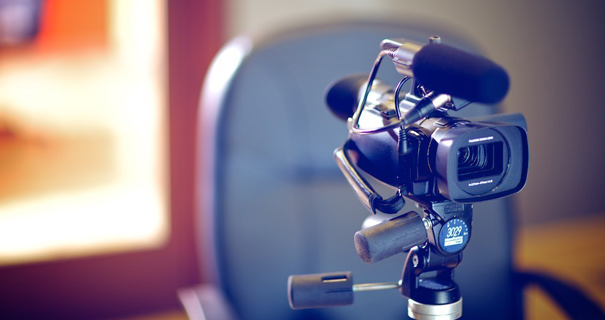Enhancing Your Legal Technique With Expert Trial Presentations
In today's legal landscape, the significance of specialist trial discussions can not be overemphasized. As attorneys browse the complexities of the courtroom, the capability to efficiently share elaborate debates is extremely important. By transforming dense legal ideas into appealing stories, experts can boost juror understanding and retention. Moreover, incorporating multimedia devices and narration strategies can develop a compelling backdrop that not just educates yet likewise reverberates mentally with jurors. The question remains: what details methods can attorneys use to boost their presentations and ultimately affect trial outcomes?
Value of Trial Presentations
Test presentations work as a critical component in the legal procedure, efficiently bridging the space in between complicated lawful disagreements and juror understanding. The capability to boil down elaborate lawful principles right into available stories is important for jurors, that should make enlightened decisions based upon the proof presented. A well-crafted discussion not just clears up the instance but likewise boosts the persuasiveness of the disagreement, inevitably influencing the jury's assumption.
In a period where interest spans are limited, the relevance of engaging visuals and clear communication can not be overemphasized. Trial presentations offer to record jurors' interest and preserve their emphasis, permitting a deeper understanding of the truths and lawful issues at hand. They give a structured framework that organizes the situation, assisting in sensible circulation and comprehensibility.

Key Parts of Effective Presentations
An efficient discussion in a court room establishing joints on numerous vital parts that jointly boost its influence. Lawyers have to boil down intricate legal arguments right into succinct, conveniently absorbable factors to make certain jurors realize the core concerns.
Aesthetic help play a critical duty too, as they can dramatically enhance crucial messages. Efficient use displays, charts, and representations can clear up complex details and emphasize crucial realities. Additionally, the speaker's distribution design is vital; confident, appealing communication fosters reliability and maintains jurors' attention.
Last but not least, recognizing the audience is critical. Customizing the discussion to the jurors' backgrounds and worths can cultivate a connection that enhances understanding to the disagreement. In summary, quality, narrative structure, visual help, shipment style, and target market awareness are integral to crafting her response a reliable courtroom discussion that resonates with jurors and sustains the overarching lawful strategy.
Modern Technology in Trial Presentations
Modern court rooms progressively integrate innovation to enhance test presentations, constructing on the foundational aspects of effective interaction established with clear messaging and engaging narratives. The unification of audio-visual aids, such as high-def projectors and interactive displays, enables lawful teams to existing proof in a much more engaging manner. This innovation not just captures the court's focus but additionally facilitates a much better understanding of intricate information.

Digital devices, including presentation software program and digital exhibit administration systems, enhance the organization and retrieval of proof (trial presentations). Lawyers can quickly reference files, pictures, and video clips, making certain that critical information is easily easily accessible throughout the test. Additionally, the use of animations and simulations can vividly show crucial ideas, making them less complicated for jurors to realize
Moreover, courtroom technology promotes collaboration among lawyers, enabling real-time adjustments to presentations based on court responses or unanticipated growths. The capacity to adjust on the fly is critical in keeping involvement and enhancing disagreements. As innovation continues to develop, its role in trial discussions will undoubtedly broaden, supplying innovative methods to interact effectively and persuasively in the search of justice.
Storytelling Techniques for Influence
Effective storytelling methods are vital in providing impactful test discussions, as they change complicated legal home debates right into relatable narratives. A well-crafted tale mesmerizes the audience, making it easier for jurors check my site to recognize and keep in mind bottom lines.
To develop a compelling story, lawyers should concentrate on developing a clear structure with a start, middle, and end. The start needs to introduce the case context and its value, while the middle elaborates on the core concerns, weaving in proof and witness testimonies that sustain the argument. Effectively, the ending need to strengthen the intended message, driving home the preferred outcome.
In addition, incorporating psychological components can considerably boost the narrative's effect. By humanizing the instance, lawyers can evoke empathy, permitting jurors to connect personally with the truths offered. Utilizing vibrant images and stories can also help in showing intricate themes, making them much more concrete and remarkable.

Tips for Implementation in Court
Applying storytelling methods in court requires cautious preparation and execution to guarantee that the story resonates with jurors. Begin by determining the core message of your instance and aligning it with the emotional and valid elements that will involve the court. Create a clear and compelling narrative arc that consists of an intro, a development of dispute, and a resolution.
Make use of aesthetic aids to improve narration; displays, timelines, and multimedia presentations can help show intricate principles and maintain juror passion. Practice your shipment, making sure that body movement, tone, and pacing are consistent with the emotional weight of your story.

Verdict
In verdict, specialist test presentations play an important function in improving lawful approaches by effectively communicating complex disagreements to jurors. The combination of visual help, clear stories, and psychological narration promotes juror involvement and understanding.